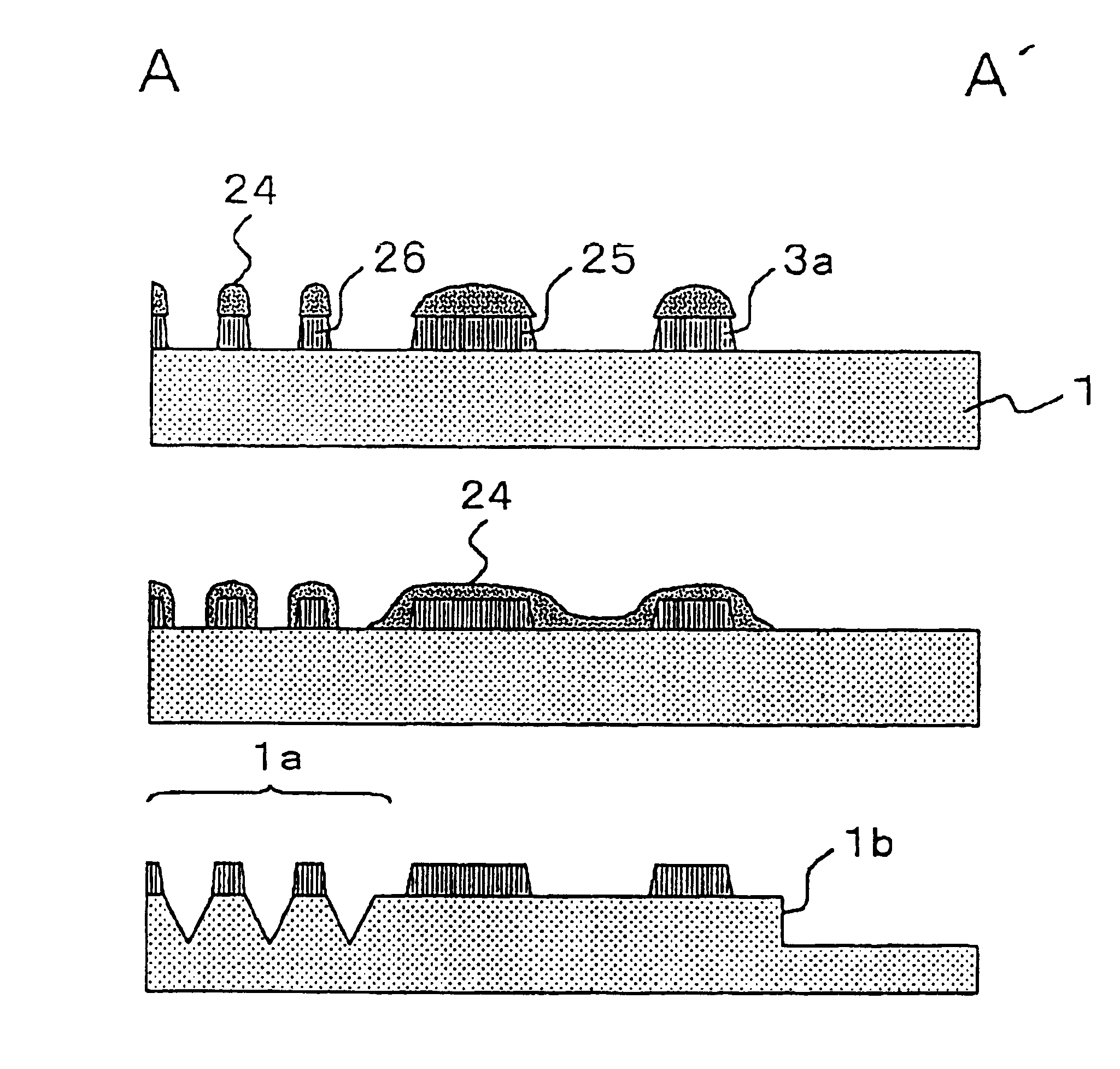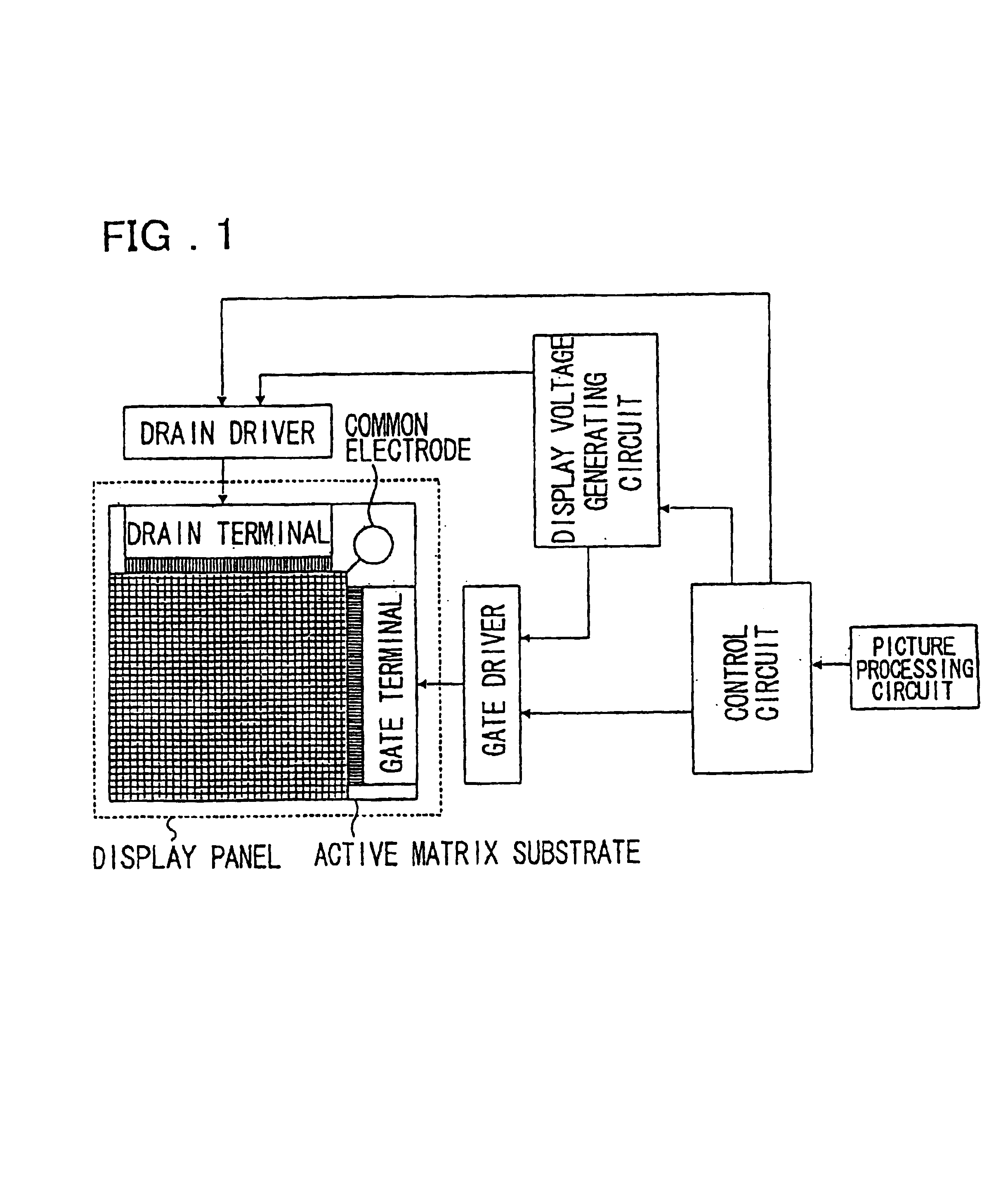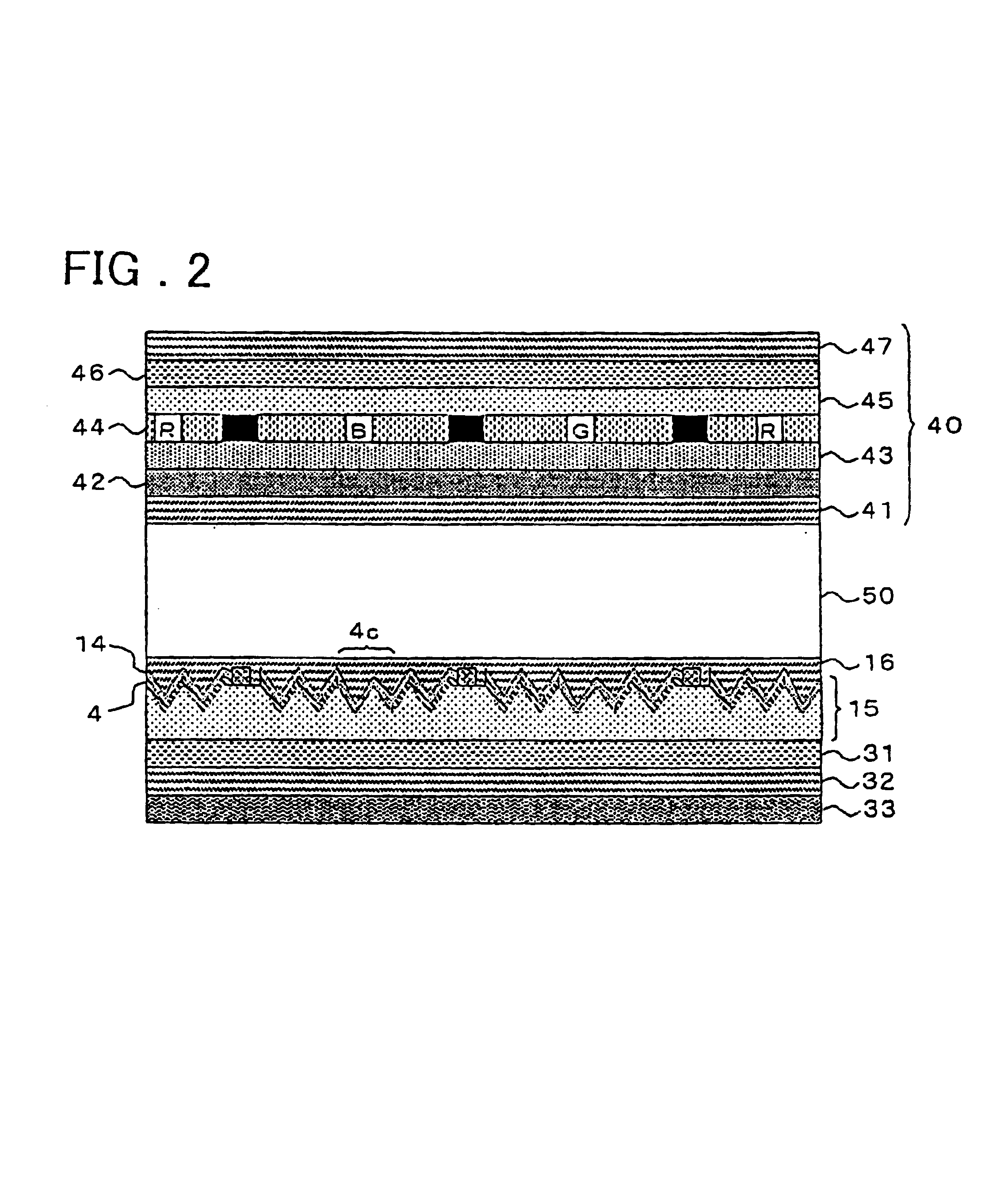Method for producing liquid crystal display apparatus
a liquid crystal display and production method technology, applied in the direction of photomechanical equipment, identification means, instruments, etc., can solve the problems of increasing the production cost of the apparatus, and high unit cost, so as to prevent the reduction of the surface roughness of the rough surface formed by the protrusions and recesses
- Summary
- Abstract
- Description
- Claims
- Application Information
AI Technical Summary
Benefits of technology
Problems solved by technology
Method used
Image
Examples
first embodiment
[0145]The process for producing the active matrix substrate is now explained.
[0146]First referring to FIGS. 5, 11a, 12a, 13a, 14a and 15a, a first mask, not shown, is formed on a planar insulating substrate 1 of, for example, glass, by a photolithography technique. A rough surface 1a then is formed on the insulating substrate 1 having a flat surface, such as a glass substrate, by a photolithography technique. Then, by e.g., wet etching, employing HF (hydrofluoric acid), sand-blasting, or dry etching, employing CF4 or O2, a rough surface 1a is formed in a preset area of the insulating substrate 1. The resulting product is washed and the first mask is removed.
[0147]The wet etching of the glass substrate is meritorious in that the back surface of the substrate is simultaneously etched to thereby reduce the substrate thickness.
[0148]Then, referring to FIGS. 6, 11b, 12b, 13b, 14b and 15b, underlying metal layers 2a, 3a, 4a and 17a of, for example, Cr, Ti or Mo (referred to below as ‘Cr’...
second embodiment
[0179]The production process for the active matrix substrate 15 in the liquid crystal display apparatus is now explained.
[0180]Referring first to FIGS. 16, 23a, 25a, 27a, 29a and 31a, a gate electrode layer (Cr layer, not shown), which later becomes underlying metal layers 2a, 3a, 17a, 18a, 19a, 20d, 20e, 21a, 25 and 26, is formed on the entire surface of the insulating substrate 1 having a planar surface.
[0181]Referring to FIGS. 16, 23a, 25a, 27a, 29a and 31a, a first mask 24 is formed on the gate electrode layer by a photolithography technique. Then, unneeded portions of the gate electrode layer are removed by for example dry etching or wet etching. This forms the gate bus line 2, gate electrode 3, underlying metal layer 17a of the gate terminal unit, underlying metal layer 18a of the drain terminal unit, underlying metal layer 19a of the common terminal unit, gate electrodes 20d, 20e for the common device unit, common bus line 21 for the drain, shorting prohibiting wiring 25 and...
third embodiment
[0210]The production process for the active matrix substrate in the liquid crystal display apparatus is now explained.
[0211]Referring first to FIGS. 33, 39a, 41a, 43a, 44a and 45a, a gate electrode layer (Cr layer, not shown), which later becomes underlying metal layers 2a, 3a, 17a, 18a, 19a, 20d, 20e and 21a, is formed on the entire surface of the insulating substrate 1 having a planar surface.
[0212]Referring to FIGS. 33, 39a, 41a, 43a, 44a and 45a, a first mask 24 is formed on the gate electrode layer by a photolithography technique. Then, unneeded portions of the gate electrode layer are removed by for example dry etching or wet etching. This forms the gate bus line 2, gate electrode 3, underlying metal layer 17a of the gate terminal unit, underlying metal layer 19a for the common terminal unit, gate electrodes 20d, 20e for the common device unit and the common bus line 21 for the drain. At this stage, the first mask 24 has not been removed.
[0213]Referring to FIGS. 33, 39b, 41b,...
PUM
| Property | Measurement | Unit |
|---|---|---|
| surface roughness | aaaaa | aaaaa |
| thickness | aaaaa | aaaaa |
| thickness | aaaaa | aaaaa |
Abstract
Description
Claims
Application Information
 Login to View More
Login to View More - R&D
- Intellectual Property
- Life Sciences
- Materials
- Tech Scout
- Unparalleled Data Quality
- Higher Quality Content
- 60% Fewer Hallucinations
Browse by: Latest US Patents, China's latest patents, Technical Efficacy Thesaurus, Application Domain, Technology Topic, Popular Technical Reports.
© 2025 PatSnap. All rights reserved.Legal|Privacy policy|Modern Slavery Act Transparency Statement|Sitemap|About US| Contact US: help@patsnap.com



